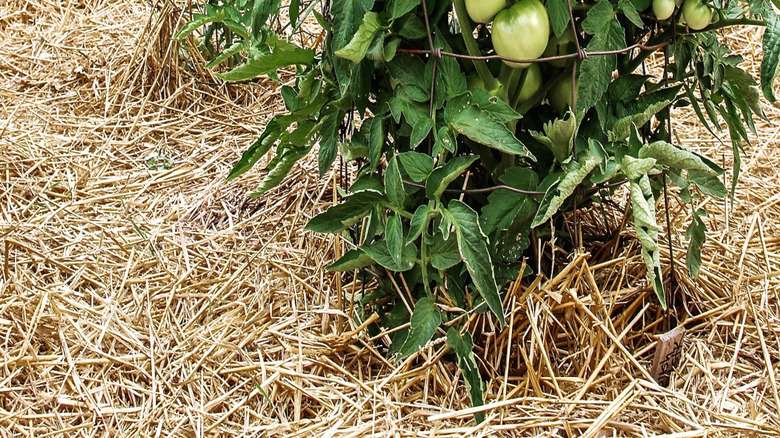The Best Spacing Method To Use For Your Caged Tomato Varieties
Do you dream of a bountiful tomato harvest with plump fruit that weighs down the healthy vines? The secret to achieving this kind of harvest isn't just about good soil or plenty of sun. It starts with the answer to the question: How far should you space out your tomato plants? When growing caged determinate tomatoes (those bred to reach a specific size and then stop growing) or other smaller, bushy types, plan to place them about 2 feet apart within each row. Leave a wider gap of approximately 3 feet between these rows, and remember to spread mulch around the base of every plant.
This type of specific spacing sets the plants up for success, allowing them to get enough sunlight, enjoy good air movement, and access the nutrients they need to produce fruit. Ignoring these measurements can lead to cramped conditions, which often means smaller harvests and more problems for the plants. It's a simple solution that makes a big difference in how well your tomato plants grow and produce throughout the season.
The logic behind caged spacing
The recommendation to space caged determinate tomato plants isn't by chance. It's a good example of how to correctly map out and space garden veggie plants based on their specific needs. This is based on the growth habits of these varieties and what they need to thrive. Determinate tomatoes are known for their compact, bushy growth, reaching a predetermined size before they begin to flower and set fruit all at once. Unlike their sprawling, indeterminate relatives, they don't grow indefinitely, which makes them ideal for growing with the aid of cages. This defined growth means they require enough room to fill out their cage without crowding their neighbors.
Giving each plant 2 feet of space allows its leaves to spread, making sure every part of the plant gets enough sunlight, which is important for photosynthesis and fruit production. When plants are too close, they can shade each other, leading to stunted growth and fewer tomatoes. The 3 feet between rows is just as important. The wider space promotes air movement around and through the plants, which helps to dry foliage quickly after rain or watering. This air circulation is a good defense against common fungal diseases that prefer damp and stagnant conditions. Proper spacing also makes it easier for you to tend to your plants, whether it's for watering, checking for pests, or picking ripe tomatoes, without stepping on the plants.
Maximizing your harvest with proper preparation
Along with spacing measurements, the tips for growing the best tomatoes involve how you prepare the ground and support your caged tomato plants, which play a large part in a successful harvest. Before planting your young tomato plants, preparing the soil with good organic matter provides a basis for strong root growth. Healthy roots are essential for absorbing nutrients that will fuel the plant's development and fruit production. Once planted, placing the tomato cages early in the plant's life, ideally at planting time, provides immediate support as they begin to grow. Trying to add cages later can damage the plant's branches and root system.
After planting and caging, applying a layer of organic mulch around the base of each plant has many advantages. A 2- to 3-inch layer of straw, shredded leaves, or compost helps keep the soil moist by reducing evaporation, meaning you won't have to water as frequently. Mulch also helps regulate soil temperature, protecting roots from extreme heat. A significant benefit of mulching is its ability to prevent soil-borne disease spores from splashing up onto the lower leaves of the plant during watering or rain, a common cause of fungal issues. This addition can help keep your tomato plants clean and less vulnerable to problems.


